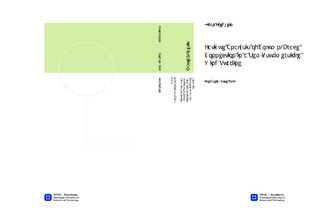| dc.description.abstract | The importance of offshore renewable energy from wind is expected to increase in the future. Most offshore wind turbines are currently installed in shallow water up to 50 meter water depth on bottom mounted substructures. To harvest more wind energy at deeper waters, offshore floating support structures are needed. Semi-submersible floating wind turbine is one of the proposed floating concepts. Under simultaneous wind and wave loads, fatigue might be an important design consideration. Study of fatigue for such structures is thought to contribute to a better understanding of offshore wind turbines.A local part of a semi-submersible wind turbine was studied. The column-brace connection, or joint, connected a wind turbine tower to a triangular semi-submersible floater. Design, stress concentration factors and fatigue damage of the part were the main topics. To calculate stress concentration factors and fatigue damage, dynamic response analyses and finite element modelling were performed. Only the fatigue limit state was considered.Three different column-brace connection designs were analysed. For the initial design, the stress concentration factors generally were way too large - especially for out-of-plane action. For the third design a horizontal bulkhead at the brace centreline was added. This modification decreased the stress concentrations by a maximum of over 90% for out-of-plane action. The modification was only carried out for brace 1.A long-term fatigue approximation with distribution of mean wind speed in the northern North Sea was considered, while the expected significant wave height and spectral peak period for a given mean wind speed were used, to reduce the simulation effort. The critical fatigue damage was observed for brace 2, with a life time of less than a year. For brace 1 the lowest life time was several hundred years, meaning a conservative design. By reducing and optimizing the brace thickness, one could reduce such conservatism. The critical hot-spot-stresses were found at the crown toe and heel for both brace 1 and brace 2. All fatigue calculations included a design fatigue factor of 3.The modification of brace 1 with horizontal bulkheads as additional stiffening reduced the stress concentrations significantly, and increased the fatigue life considerably. Brace 2 still needs to be modified to decrease the stress concentrations, and thus increase the fatigue life. | nb_NO |

